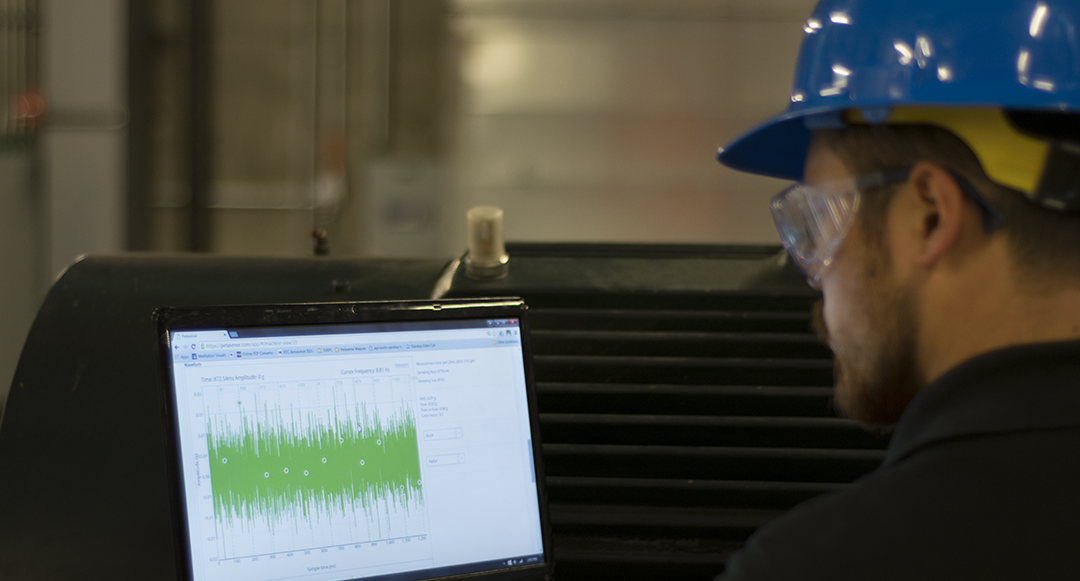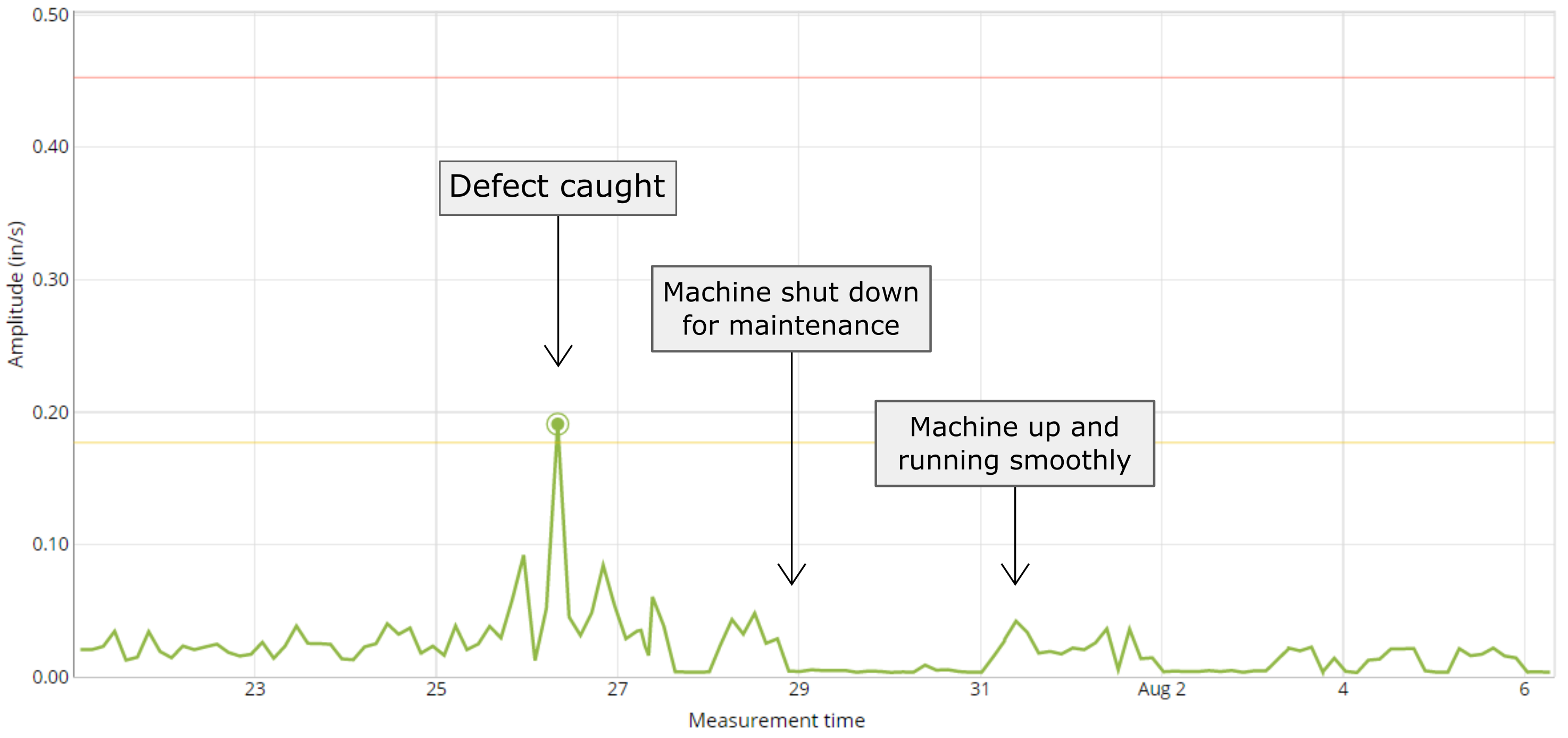Stanford University launches Wireless Predictive Maintenance with Petasense
CENTRAL ENERGY FACILITY – PALO ALTO

Stanford University Central Energy Facility, © Robert Canfield – Robert Canfield Photography
BACKGROUND
In 2015, Stanford completed the reconstruction of their 125,000 square-foot Central Energy Facility (CEF). The goal was to replace the previous fossil-fuel-based system with grid-sourced electricity and a first-of-its-kind high efficiency heat recovery system. By incorporating the most progressive technologies available, the new CEF has drastically reduced greenhouse gas emissions, fossil fuel use, and water consumption, positioning Stanford as a leader in energy efficiency and reducing carbon dioxide emissions.
GOALS
As part of its ongoing efforts to improve equipment reliability and optimize maintenance costs, the CEF began looking for state-of-the-art predictive maintenance technologies to monitor their critical machinery. These machines include high-capacity pumps that circulate chilled and hot water throughout the campus. The CEF is also responsible for supplying the Stanford School of Medicine and the Lucille Packard Children’s Hospital, which fall under the State of California’s OSHPD jurisdiction for critical facilities. The CEF maintenance team had the following criteria to evaluate various predictive maintenance solutions:
1. Simplicity and short time-to-deploy: Stanford was looking for a PdM system that was simple to install and quick to launch. They did not want to incur the expenses of wiring traditional sensors to their building control systems. Additionally, they did not want to undertake any custom IT projects just to visualize sensor data.
2. Elimination of manual data collection: Some of the wireless PdM offerings that Stanford evaluated still involved manual data collection. The CEF was looking for technology that continuously monitored the machines and fully automated the data collection process.
3. Easy access to real-time insights: Finally, and perhaps most importantly, the CEF team wanted to receive immediate alerts when a machine was deviating significantly from its P-F curve. It was also valuable for them to track the utilization of their machines in order to maximize equipment life cycles. All of this information needed to be accessible at anytime from their mobile devices or computers.
SOLUTION
Stanford began a trial with Petasense in Q2 2016 to monitor some of their critical pumps. Within a few hours, the Petasense Vibration Motes were installed and connected to the facility’s WiFi network. The Motes are wireless, tri-axial vibration sensors for continuously monitoring the health of industrial machinery. The moment a Mote starts collecting data, the system begins building a baseline to determine how healthy a machine is. This proprietary machine learning process takes place in the Petasense Cloud, where multi-parameter data is stored and analyzed for trends and anomalies. Stanford was able to view vibration data immediately with the Petasense Web and Mobile applications. With a color-coded machine health dashboard, Petasense made it convenient for the CEF team to focus on the machinery that needed attention.
While the Petasense solution enabled Stanford’s reliability team to target deteriorating machines, another goal was to gain insight into the utilization of their equipment. Stanford wanted to equally distribute the use of these pumps to increase the lifespan. Most of the critical pumps at the CEF have backups in place, which can handle the load if there is a problem with a primary pump. However, Stanford had no way to determine whether they were utilizing their pumps in an efficient manner. Petasense was able to solve this by providing the actual utilization of these pumps in real time. Petasense Motes are able to track the on-off state of a machine on a real time basis, allowing the CEF staff to maintain optimal utilization across their fleet of critical pumps.

Maintenance technician at the Stanford CEF viewing real-time wave form charts on Petasense Web App
RESULTS
A few weeks after the trial began, one of Stanford’s chill water pumps started showing high levels of vibration. This triggered an automated alarm based on the excessive amplitudes observed in the high-frequency bands. The facility personnel were quickly able to redistribute the load to a backup, avoiding permanent damage to the primary pump. Once the situation was defused, Stanford inspected the machine and took corrective action. Without a continuous monitoring program in place, Stanford would have identified this problem days or weeks later, resulting in repair costs that could easily exceed half a million dollars.

Petasense Web App, RMS Trend Chart – Stanford CEF, Chill Water Pump (July 22 – August 6, 2016)
After completing a 3-month trial, the CEF concluded that Petasense provided the best solution in the market to meet the facility’s predictive maintenance needs. Based on the trial, the CEF decided to monitor all of their pumps with nearly a hundred Petasense Motes. They also setup a dedicated monitor in their control room so operators can view the Petasense Web dashboard on a continuous basis. By investing in Petasense’s cutting-edge industrial IoT solution, the CEF maintains real time insight into the health and utilization of equipment across their entire facility.
 Thanks for subscribing - stay tuned for our next newsletter
Thanks for subscribing - stay tuned for our next newsletter